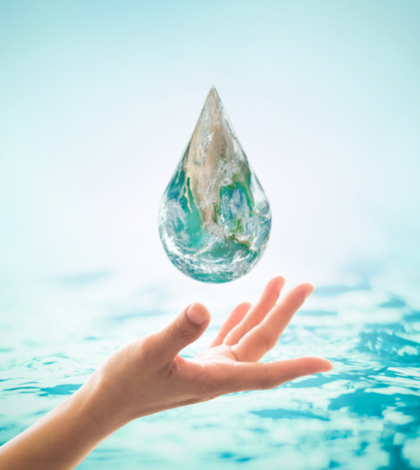Despite the end of the state’s five-plus year drought throughout the vast majority of the state, Californians are continuing to show that they’ve learned water conservation — even if we had to learn it the hard way. The State Water Resources Control Board released their statewide conservation for April 2017 showing urban areas reached 21.7 percent in water savings for the month as opposed to the 2013 baseline. The State Water Board has been tracking water conservation for each of the state’s larger urban water suppliers (those with more than 3,000 connections) on a monthly basis since June 2014.
Of California’s 10 hydrologic regions five regions reported a higher percentage of water saved in April of this year versus April 2016. The Tulare Lake Hydrologic Region maintained a steady 30.1 percent in water savings over the 2013 baseline. The greatest water savings this April was reported by the Sacramento River region with a 42.8 percent savings over the 30.3 percent savings they posted last year. Conversely, of the four hydrologic regions with greater water use in April 2017 as opposed to April 2016, the South Coast Hydrologic Region reported 12.3 percent versus 22.8 percent, respectively.
Throughout the state’s water suppliers only four exceeded April 2013’s water production. The state’s more than 375 other reporting water suppliers’ savings ranged from zero (but not exceeding the 2013 baseline) to more than 30 percent. Savings included zero to 10 percent for 54 suppliers, 10-20 percent for 128 providers, 20-30 percent for 68 purveyors and 30 percent or more for 138 of the state’s suppliers. Of the 138 that reported water savings greater than 30 percent in April 2017, 115 also increased water savings by more than 10 percent over what they saved in April 2016. These water savers/districts include Anderson, Bella Vista, Dinuba, Fairfield, Gilroy, Mountain View, Patterson, Roseville, Sacramento, Tulare and Yreka.
With the assumed estimate that the average person uses 0.2 acre-feet of water per year, April 2017’s savings of 110,487 acre-feet or 36 billion gallons is enough to supply 552,000 Californians with water for one-year. This equates to the approximate population of the Central Valley’s Stanislaus County.
The average statewide residential gallons per capita per day (R-GPCD) for April 2017 was 81 gallons. Average hydrologic region R-GPCDs for April 2017 range from 46 to 163 with six hydrologic regions reporting lower R-GPCDs in April 2017 than they did in April 2016. All ten hydrologic regions had an average R-GPCD in April 2017 lower than in April 2013 and April 2015. Water production data was not collected in April 2014.
The current prohibitions against wasteful water use practices remain in effect throughout the state. These include no outdoor watering during or within 48 hours after a rain event, hosing down sidewalks/hardscapes instead of using a broom or a brush, and overwatering a landscape to where water is running off onto the sidewalk or into the gutter.
 California Water News Daily Your Source For Water News in California
California Water News Daily Your Source For Water News in California


